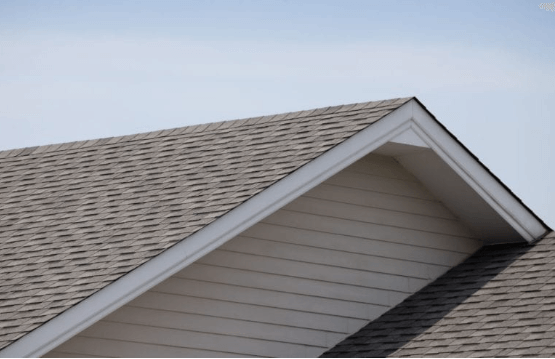New US Solar Duties: How Hanwha And OCI Plan To Expand Market Share

Table of Contents
Hanwha's Strategy to Maintain and Grow Market Share
Hanwha, a global leader in solar energy, is leveraging its vertically integrated business model to weather the storm of new US solar panel tariffs. This strategy minimizes its reliance on imported components and strengthens its competitive edge.
Vertical Integration and Domestic Manufacturing
Hanwha's success is rooted in its control over the entire solar value chain. From polysilicon production – a key raw material in solar cell manufacturing – to solar cell production and, finally, module assembly, Hanwha possesses a significant advantage. This vertical integration allows for greater control over costs and quality. To further mitigate the impact of tariffs, Hanwha has made substantial investments in US-based manufacturing.
- Hanwha Q CELLS, a subsidiary of Hanwha Group, operates a large-scale solar cell and module manufacturing facility in Dalton, Georgia.
- This facility boasts a significant production capacity, producing millions of solar modules annually, contributing to domestic solar panel production.
- Hanwha has also forged strategic partnerships with US-based companies to secure local supply chains and further reduce reliance on imports.
Focus on High-Efficiency Solar Technologies
Hanwha is not simply focusing on volume; it's prioritizing innovation. By investing heavily in research and development, Hanwha continues to push the boundaries of solar cell efficiency. These advancements allow them to offer superior performance, even with increased production costs due to tariffs.
- Hanwha Q CELLS is a leader in developing high-efficiency solar cells, such as its Q.PEAK DUO-G9 series, which delivers exceptional energy output per square meter.
- The company continuously invests in R&D to improve cell and module designs, resulting in even higher efficiency and durability.
- This commitment to technological advancement ensures that Hanwha remains competitive, offering high-value products in the US market.
Strengthening Supply Chain Resilience
To safeguard against future disruptions, Hanwha is diversifying its supply chain, moving away from sole reliance on specific regions or suppliers. This approach reduces vulnerability to geopolitical instability and ensures a consistent supply of raw materials.
- Hanwha is actively exploring partnerships with multiple polysilicon suppliers from various regions to mitigate risks associated with single-source dependence.
- The company is also investing in research and development to develop alternative materials and reduce reliance on specific resources.
- This proactive approach to supply chain management is crucial for long-term sustainability and market leadership.
OCI's Approach to Capitalizing on the Changing Market Dynamics
OCI, a major player in polysilicon production, is strategically positioned to benefit from the increased demand for domestically produced solar components. Their strategy focuses on expansion, collaboration, and leveraging their existing US infrastructure.
Polysilicon Production Expansion
OCI's expertise lies in polysilicon production, a critical raw material for solar cell manufacturing. With the new tariffs increasing demand for domestically sourced polysilicon, OCI is capitalizing on this opportunity.
- OCI is significantly expanding its polysilicon production capacity to meet the growing market demand.
- This expansion includes investments in new facilities and upgrades to existing infrastructure, solidifying their position as a key supplier.
- OCI's strategic pricing ensures they maintain competitiveness while capitalizing on the higher market demand for domestic polysilicon.
Strategic Partnerships and Collaborations
OCI is actively forging alliances with major solar panel manufacturers, securing access to crucial distribution channels and strengthening its market presence.
- OCI has established partnerships with several leading solar panel manufacturers, providing a reliable supply of polysilicon.
- These collaborations facilitate the efficient flow of materials within the solar industry's supply chain.
- This approach ensures OCI's polysilicon reaches the market effectively, maximizing its market share and profitability.
Leveraging Existing US Infrastructure
OCI’s existing US presence provides a considerable advantage in rapidly responding to market changes. This established infrastructure minimizes the logistical hurdles faced by competitors.
- OCI has existing polysilicon production facilities in the United States, enabling swift adaptation to increased demand.
- This existing infrastructure reduces the time and resources required for expansion compared to companies lacking a US presence.
- The established supply chains and operational experience in the US market are key factors in OCI’s success.
The Broader Impact of New US Solar Duties
The new US solar duties have far-reaching implications for the entire US solar industry. While presenting short-term challenges, they also create long-term opportunities for growth and innovation.
Implications for the US Solar Industry
The tariffs have led to a complex interplay of factors, impacting both job creation and pricing within the solar industry.
- While some jobs might have been lost initially in certain sectors, investments in domestic manufacturing by companies like Hanwha are creating new jobs in the US.
- The increased costs of solar panels due to tariffs will likely increase the cost of solar energy projects.
- However, the long-term goal of increasing US energy independence and domestic manufacturing could lead to more sustainable growth in the long run.
Competition and Innovation
The new environment is fostering increased competition and driving innovation within the US solar market. Companies are forced to find creative solutions to remain competitive.
- The increased focus on domestic manufacturing is encouraging innovation in solar technology and production methods.
- Competition among domestic manufacturers is driving efficiency improvements and cost reductions.
- This competition ultimately benefits consumers through improved solar panel technology and potentially lower long-term costs.
Conclusion
The new US solar duties have reshaped the US solar market, presenting both hurdles and opportunities. Hanwha and OCI, with their distinct yet complementary strategies, are demonstrating how to navigate this challenging landscape. Hanwha’s emphasis on vertical integration, technological advancements, and supply chain resilience, coupled with OCI's focus on polysilicon production expansion and strategic partnerships, illustrates a pathway to success in this evolving sector. These strategies highlight the broader implications of the tariffs, potentially leading to a more robust and innovative US solar industry in the long term. Stay informed on the latest developments in the US solar market and how companies are adapting to the new US solar duties. Learn more about Hanwha and OCI's strategies for success by visiting their respective websites and researching industry reports on the impact of the new US solar tariffs.

Featured Posts
-
 Exigindo Justica Para Bruno Fernandes A Voz Do Povo
May 30, 2025
Exigindo Justica Para Bruno Fernandes A Voz Do Povo
May 30, 2025 -
 Ticketmaster Setlist Fm Todo Lo Que Necesitas Para Tu Proximo Concierto
May 30, 2025
Ticketmaster Setlist Fm Todo Lo Que Necesitas Para Tu Proximo Concierto
May 30, 2025 -
 Analysis How The New Us Energy Policy Could Affect Your Energy Bills
May 30, 2025
Analysis How The New Us Energy Policy Could Affect Your Energy Bills
May 30, 2025 -
 Top Seed Pegula Claims Charleston Championship After Collins Match
May 30, 2025
Top Seed Pegula Claims Charleston Championship After Collins Match
May 30, 2025 -
 Setlist Fm Potencia La Experiencia Del Fan Gracias A Su Integracion Con Ticketmaster
May 30, 2025
Setlist Fm Potencia La Experiencia Del Fan Gracias A Su Integracion Con Ticketmaster
May 30, 2025
